Data Science of a Post Covid-19 14-Day Fast With a Dislocated Elbow
Disclaimer: Please consult your doctor about fasting. This article is not advice but an explanation of the data science around a 14-day fast. I did tell my general practitioner I was about to do a 14-day fast. Additionally, Dr. Jason Fung has a great book, The Complete Guide to Fasting, about fasting that spells out a safe 14-day protocol.
Late summer of 2022, I was bouldering in a climbing gym and attempted a route that pushed the boundaries of my ability. I tried on multiple visits to finish the last part of the route, but the final hold seemed dangerous to grab. One early morning I decided to “go for it” and missed the top of the wall and found myself falling at a horizontal angle. Seconds later, I am on the ground with a badly dislocated elbow.

After going to the emergency room in an ambulance and getting my elbow put back together, I thought I would use this injury as an opportunity to try an extended 14-day fast to both lose my Covid-19 weight and accelerate the healing of my elbow ligaments.
I have quite a bit of experience with the data science of intermittent fasting and thought it would be good to apply those same skills to this 14-day fast.
My routine is as follows for the 14-day fast:
- Morning infrared sauna for 30 minutes (something I do daily anyway)
- Morning walk
- Daily multi-vitamin
- Flavorless Electrolyte Powder or Bone Broth (I am not a purist)
- Water and Sparkling Water
- As much black coffee as I want
- Random weight lifting
When I finish the fast, my goal is to expand my typical 16:8 fast of eating between 12 noon-8 pm and supplement it with a weekly fast on Sunday, i.e., 6:1, and a monthly 72-hour fast. I hypothesize that fasting is a necessary part of being human, and I want to incorporate it as a systemic tool in my life (a lot like automated testing in software engineering).
Baseline Metrics
The baseline metrics I have are as follows:
Bodyweight: 240 Median Blood Pressure: 131⁄86.5 (slightly above average, which is 120⁄80) Median Resting Heart Rate: 58 Total Cholesterol: 220
I will compare this baseline again with new metrics at the end of the 14-day fast.
Observations Days 1-4 of Fasting
The first 48-72 hours are when I am most hungry, but it isn’t too bad since I allow myself an option to consume a box of bone broth. By day three, hunger essentially goes away; by day four, food doesn’t seem attractive for much of the day.
A few key takeaways:
- Swelling and bruising in the right formally dislocated elbow reduced to significant levels where previously they seemed slow to heal and reduce swelling. Curious if this is due to autophagy and 1200% growth hormone release.
- Visual clarity is impressive, and fasting improves my vision, perhaps at least one level. Not sure why, though.
- My mind is sharp and crisp, and my body is alert and full of energy. In particular, I woke up feeling amazing on day four despite having no food for four days.
- Drinking unsweetened sparkling water like LaCroix is a great way to kill time in the place of food.
Context around Resting Heart Rate, Blood Pressure, and Exercise
In college, making regular interval training on the track, i.e., weekly 200m sprints under 27 seconds in a repeat, my heart rate was in the low thirties, and the lowest measured was 33. My body weight was around 190-208, depending on how much muscle and fat I had during a different training style. After college, with less than 10% body fat and a lot of lifting heavyweight, I was around 230 peak (bench pressing 140lb dumbells and 365 for reps). So I know my healthy body weight range is between 190-230 and less than 10% body fat, so I believe about 208 is suitable for this stage of my life.
One takeaway is that my heart rate should most likely be in the 40s since this represents a personal level of fitness that is reasonable without being too extreme. As a result, one of my KPIs (Key Performance Indicators) should be resting heart rate below 50. A key driver of this is weekly HIIT training of at least one occurrence.
Day 5
Description: I feel excellent waking up and have no hunger, just like day 4.
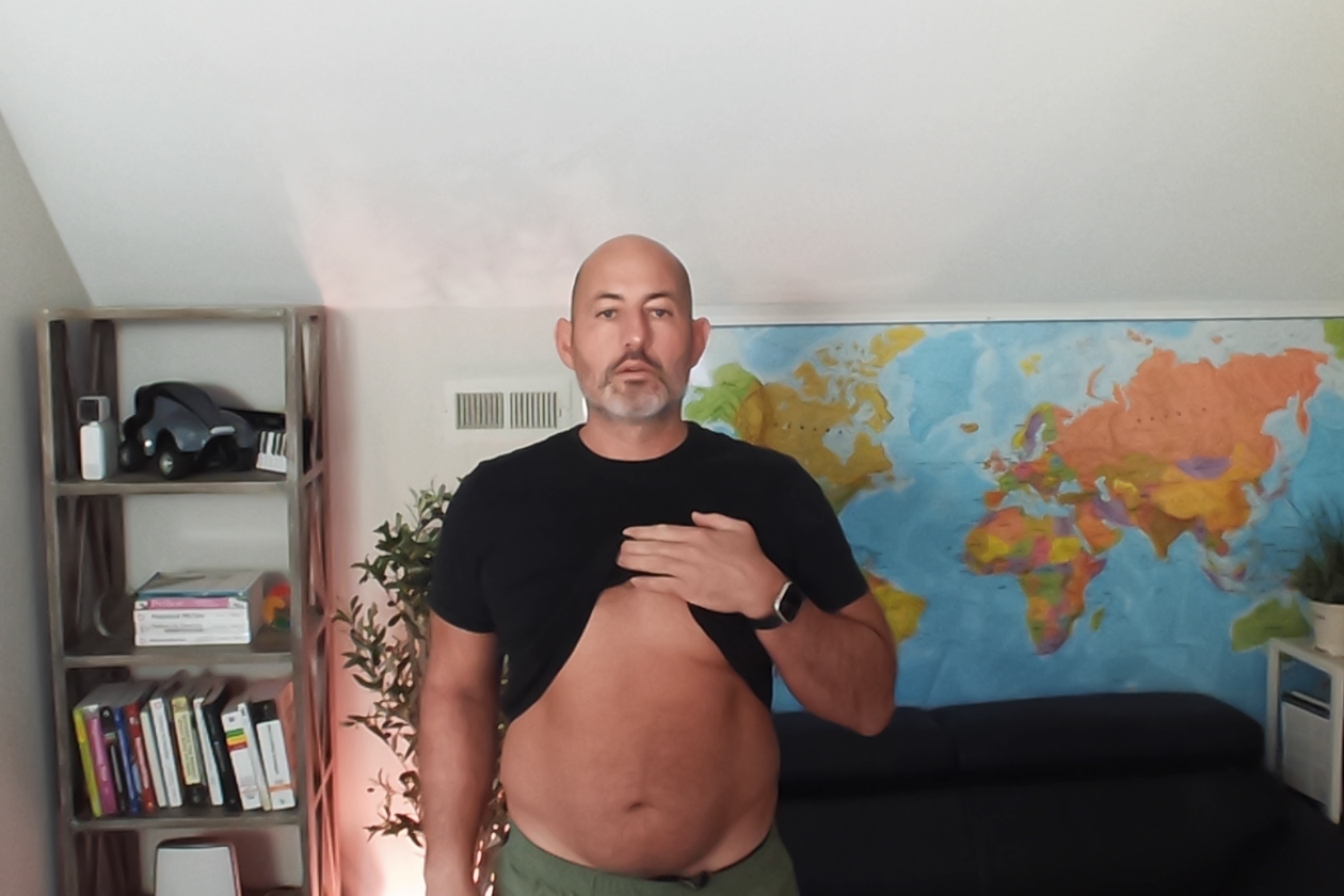
Bodyweight: 228.5
Reading #1 BP: 123⁄78 HR: 55
Reading #2 BP: 125⁄78 HR: 55
Fitness: 12 X 10 second all out, 20-second rest Rogue Bike followed by 1-hour walk.
Day 6
Description: I still feel great, with no hunger. It doesn’t seem much different than any day I may have eaten regular meals the day before.
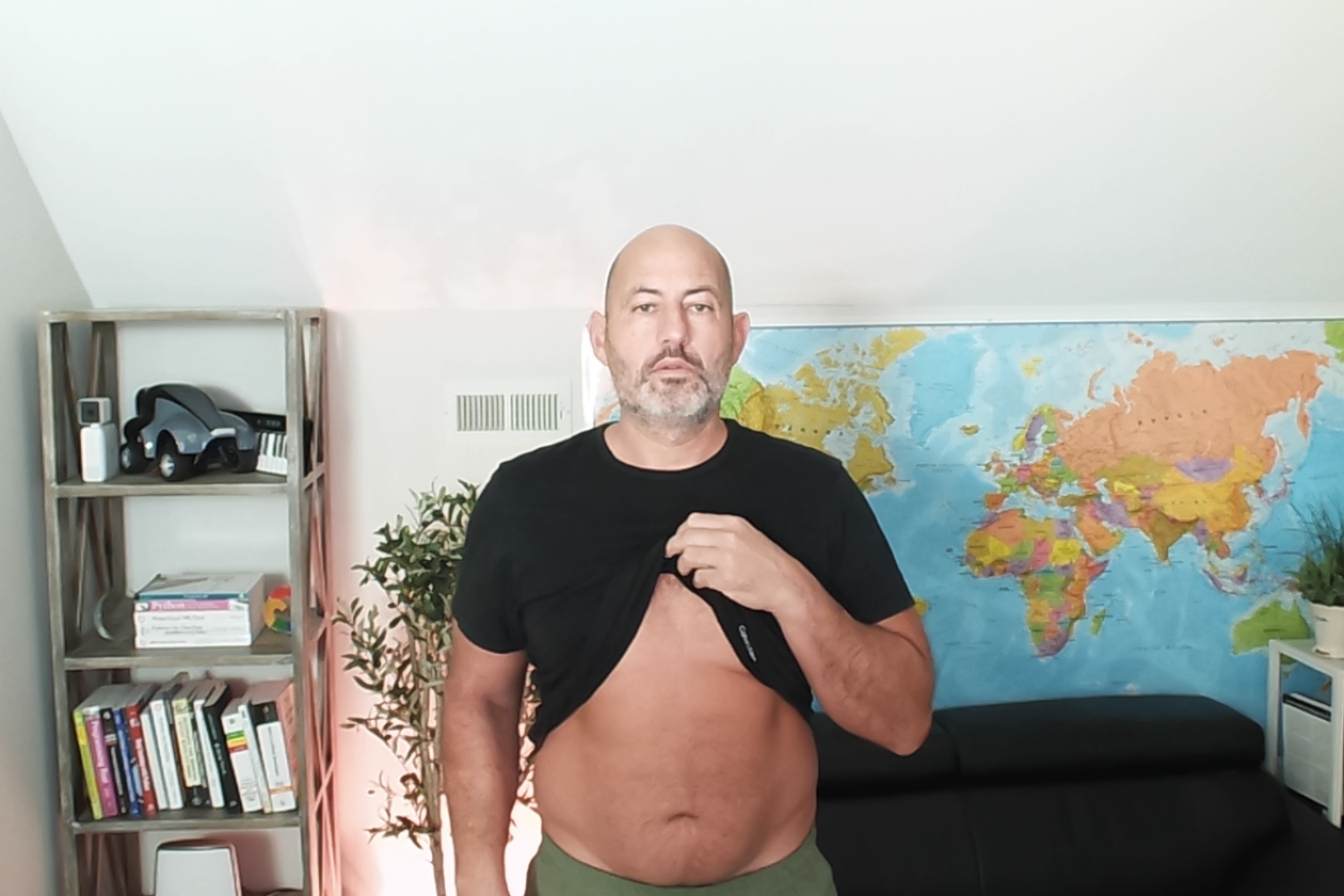
Bodyweight: 226.5
Reading #1 BP: 124⁄81 HR: 56
Day 14
Description: Impressed at the actual metrics in blood pressure and weight from this fast.
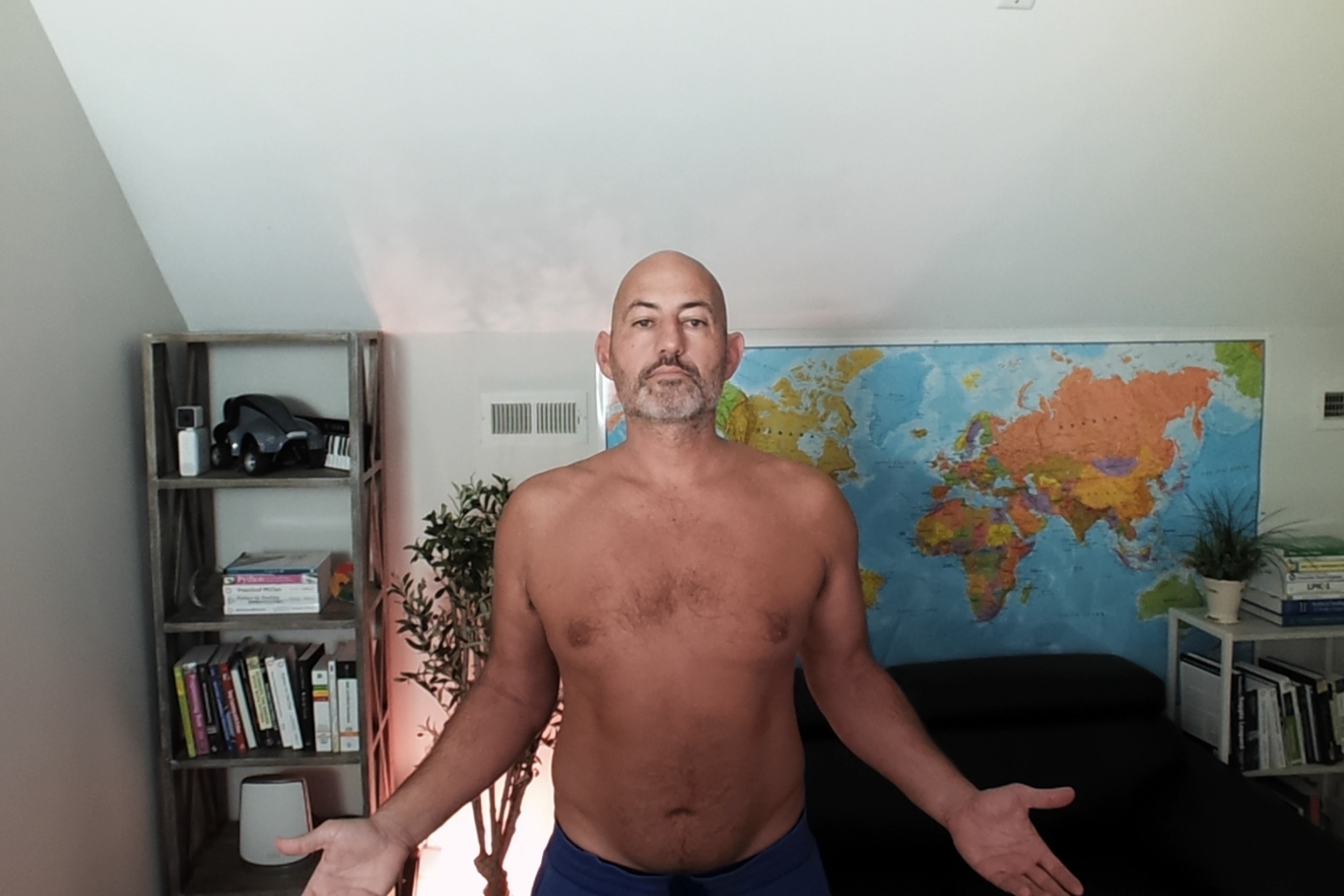
Bodyweight Implications for both Professional Athletes and Sedentary
It is easy to be in denial about the harmful effects of excess body weight when many professional athletes are in superb physical condition yet overweight. Sumo wrestlers are perhaps the most remarkable example of being in super physical condition yet dying 20 years early due to the harmful effects of excess weight. Similarly blood pressure is positively correlated with BMI.
Even premier athletes like NBA superstar Zion Williamson have to watch their diet. A recent contract that pays him 193 million dollars requires that he stay below 295 pounds.
Even though many want to believe that being fit is good enough, it simply isn’t. You can be very fit athletically and kill yourself with excess body weight. Orthopedic Surgeon Howard Luks puts it as follows in his book Longevity Simplified: “A typical Western lifestyle and diet are not likely to help you achieve your healthspan goals. You cannot outrun, out-exercise, or medicate away a poor diet. Your lifestyle choices and decisions around your sleep, diet, exercise, and more lay out the appropriate foundation on which you can build your healthy longevity program.”
Further, he says, “From an orthopedic surgery and sports medicine perspective, poor metabolic health and metabolic disease have been proven to affect knee pain, our rotator cuff and even increase our risk of developing osteoarthritis.”
The data on my end is clear. Eating healthy and fasting isn’t just a good idea; it could save your life. I see the same trend as research papers in my Body Weight, and Systolic BP has an R-squared of 50%, i.e., 50% of the reason for Blood Pressure is my weight. A study in 2019 shows a clear relationship between prolonged fasts and blood pressure. You can download the data here. For most people, the longer the fast, the lower the blood pressure drop. A good example data point is a Male with a high blood pressure of 163 SBP; after a 17 day, fast had a blood pressure of 136 SBP, a genuinely staggering drop to almost normal blood pressure.
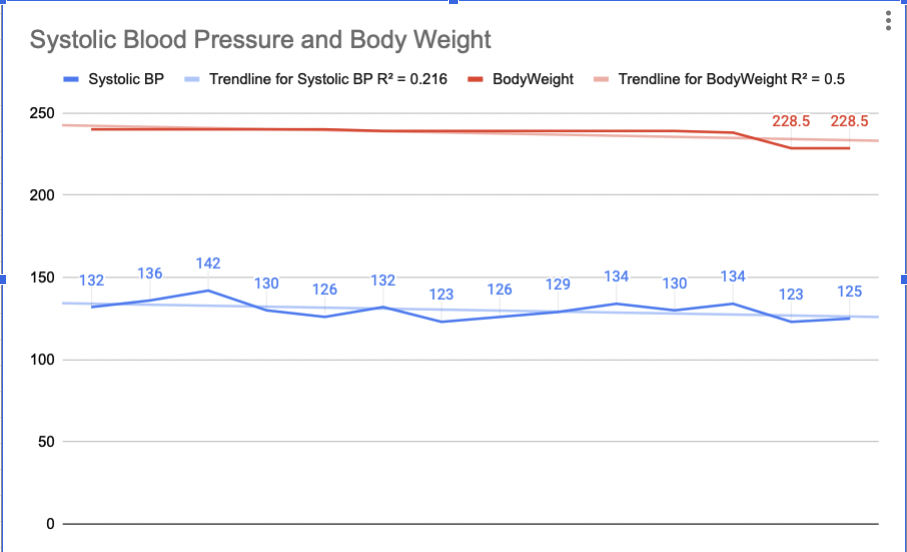
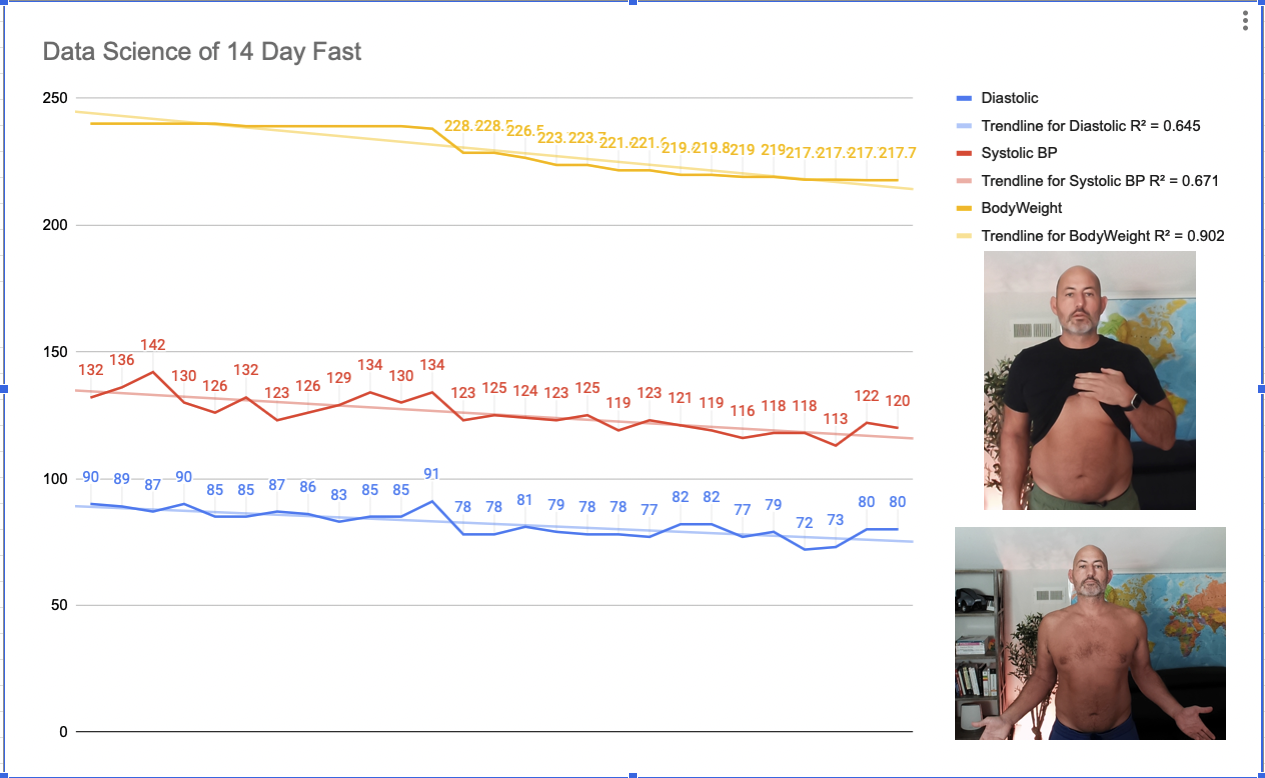
Conclusions
What I have learned from doing quantitive analysis of both intermittent fasting and prolonged fasting is as follows:
- It seems prudent to fast regularly for health, both 24-hour+ fasts as well as intermittent fasting. The data on my end is clear. There is nothing this effective or quicker to improve health for those overweight.
- Creating automated fasting (both intermittent and prolonged) is a bit like doing automated continuous integration tests. It creates guardrails that prevent your body from going off the rails.
- You cannot out-exercise a bad diet; the actual food and frequency are critical to being healthy and staying alive.
- It is easy to be in denial about a little bit of belly fat and think it doesn’t matter. It could be killing you slowly if you look at critical metrics, including Blood Pressure, Cholesterol, Triglycerides, and more.
- Covid-19 significantly impacted my health by limiting my ability to exercise in sports, which cascaded into unhealthy body weight through overeating/drinking and a sedentary lifestyle.
Resources
- Data science Meets Intermittent Fasting
- The Complete Guide to Fasting
- Longevity Simplified
- Bodyweight and Blood Pressue
- Exercise and Blood Pressure
- Growth Hormone 5 Day Fast
- Blood Pressure Changes in 1610 Subjects With and Without Antihypertensive Medication During Long‐Term Fasting
- Muscle Hemotomas
- Cedars Sinai-Autophagy: Recycling Is Good for Your Body Too
- Safety, health improvement and well-being during a 4 to 21-day fasting period in an observational study including 1422 subjects